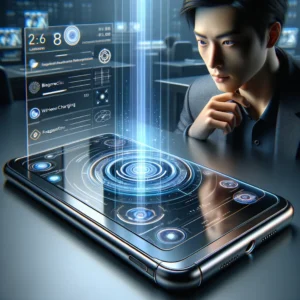The 5 Biggest Virtual, Augmented, and Mixed Reality Trends
By TIMEOFINFO
January 24, 2023
Update on : February 8, 2023

Many refer to the joint concepts of virtual reality (VR), augmented reality (AR), and mixed reality (MR) as “extended reality” (XR). AR encompasses using a phone or glasses to interpolate computer images over the actual world. Conversely, VR involves donning a headset to enter a fully interactive, 3D digital environment. MR can be a fusion of both technologies.
These extended reality technologies have proven to be technological advancements making milestones globally. Besides the gaming industry, VR and AR have already penetrated other sectors, such as manufacturing, https://litslink.com/services/blockchain-development-services, education, eCommerce, health care, engineering, and real estate.
All these realities incorporate new ways of connecting with and perceiving our rapidly digital world. And while they all have unique methods of accomplishing it, they allow us to have more prosperous, immersive experiences. The past few years have cemented the digital realities many of us live in. This, in turn, has increased interest in innovations surrounding XR and virtual worlds. Below are some significant trends at play and their influence in several spaces through the year 2023 and beyond:
1. XR and the Metaverse
The Metaverse, commonly known as Web 3.0, is a notion that is currently the subject of a lot of interest. Taking Facebook’s recent rebranding as “Meta” as an example, it’s vivid to see this development’s strides throughout 2022. And even though the Metaverse doesn’t need to exist only in XR, that is the iteration attracting the most interest. This is because the notion revolves around more immersive experience environments, which XR interfaces are well suited for.
Recent strides in the Metaverse have now revealed how it looks. It has also shown the prospective roles it will play in our lives. Currently, connections between humans and automated entities occur in somewhat immersive XR settings that make up most of the Metaverse.
Some involve people’s regular encounters with augmented reality applications on their PCs and mobile devices. Some of these encounters occur in more realistic settings in virtual or fantasy worlds. Some take place in mirror worlds that mimic real-world settings.
2. Upgraded headsets and equipment
Immersive technology demands more sophisticated hardware as it evolves to give people virtual reality experiences. 2021 witnessed a lot of forecasts for VR, which predicted that the much-anticipated VR headsets would be widely accessible by 2022. They added that these and more pieces of equipment would offer first-rate XR experiences.
Through 2030, the virtual reality (VR) market is expected to increase rapidly. This development demonstrates the enduring appeal of VR gaming and entertainment and the surge in business and industry implementations. Manufacturing, education, the military, aerospace, and retail are the few sectors discovering applications for VR.
Numerous VR headsets, like the Occulus (Meta) Quest 2 and the HP Reverb, Varjo Aero, and Valve Index, are now selling fast. The extended reality (XR) market is already enormous and diversified, with more than 85 businesses trading more than 220 various augmented reality (AR), mixed reality (MR), and virtual reality (VR) headset models.
3. Retailing XR
The retail sector is undergoing significant change both online and offline, and both several present potentials for XR technology innovation. Online retail can utilize virtual reality (VR) technologies to produce more realistic and compelling shopping experiences that mirror the practical benefits of traditional stores.
Alternatively, in physical stores, augmented reality (AR) technology can assist shoppers in finding what they need on the shelves and offer the kind of information and feedback opportunities.
Virtual reality (VR) enables online retail experiences beyond what is conceivable with standard e-commerce websites. We anticipate seeing more physical stores equipped with augmented reality (AR) features like virtual mirrors that let shoppers try on various clothes without touching anything. When kids locate products they like, they can be told where to go on the shelves to find them.
4. XR and 5G
Telecommunications companies are creating 5G infrastructures to support large data streaming due to the increasing interest in extended reality (XR) applications and hardware.
As immersive technologies become more integrated into corporate organizations, there will be an increase in user demand for 5G mobile networks supporting these tools.
Chinese researchers are still employing 5G networks. Around 1.85 million 5G base stations are being built in the region, serving 450 million end users and 60% of all 5G usage globally.
The decision takes into account XR technology as well. Chinese researchers built the 5G network to support AR, VR, and MR solutions for various vertical use cases. Regional healthcare partners now employ 5G-ready XR headsets to operate on cancer patients because of the new networks.
The introduction of 5G will draw hordes of XR developers into the business sector. More XR developers will result in ground-breaking breakthroughs that are so much beyond our current comprehension.
5. XR in education
The educational and training field is arguably one of the most interesting potential applications for the XR revolution. XR promises a new environment for engaging and practical learning experiences as educators and training teams search for fresh ways to captivate and motivate their pupils.
San Diego University employs virtual reality to teach astronomy to students, while Penn State University already has a locomotive simulator. Immersive learning application cases have skyrocketed. This has increased the development of possibilities in workplace training, enhanced information retention, real-world models, and virtual classrooms.
Police academies are already employing VR to train cops to handle difficult circumstances. Without utilizing cadavers, medical students are learning about human anatomy through equipment like the Microsoft HoloLens system. Through VR and mixed reality tools, even business experts are exploring new methods to communicate with clients.
















